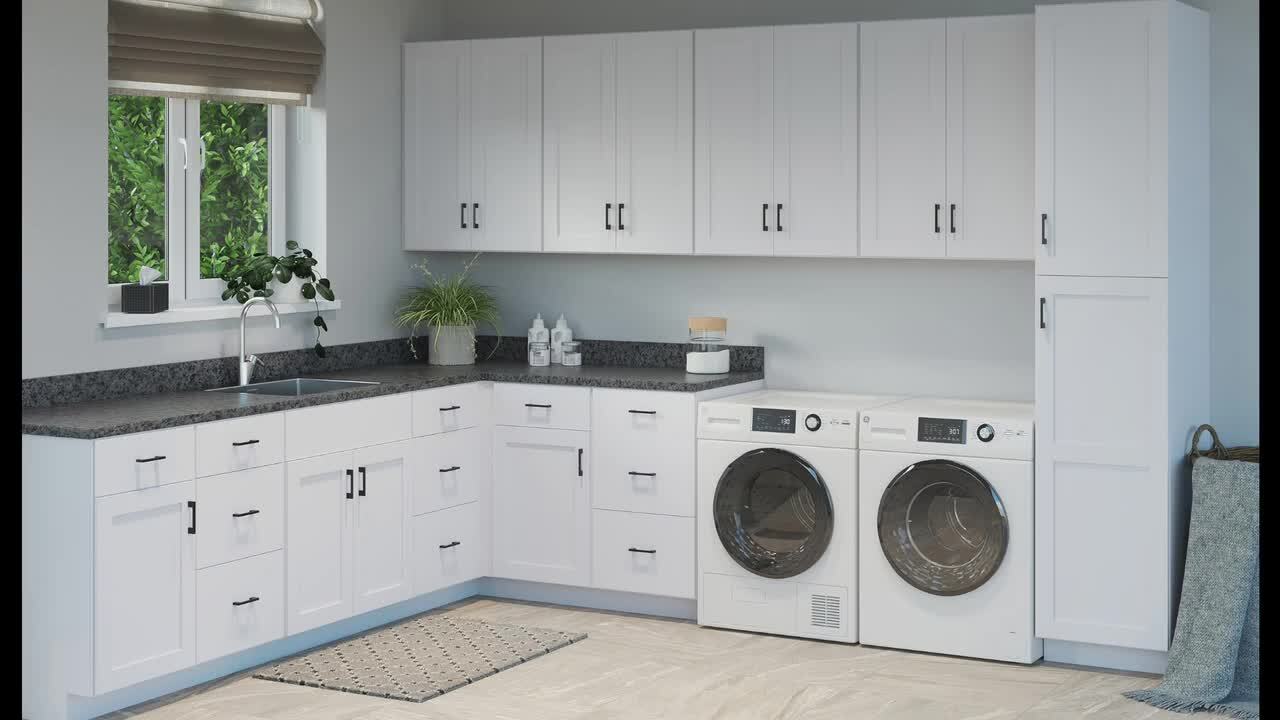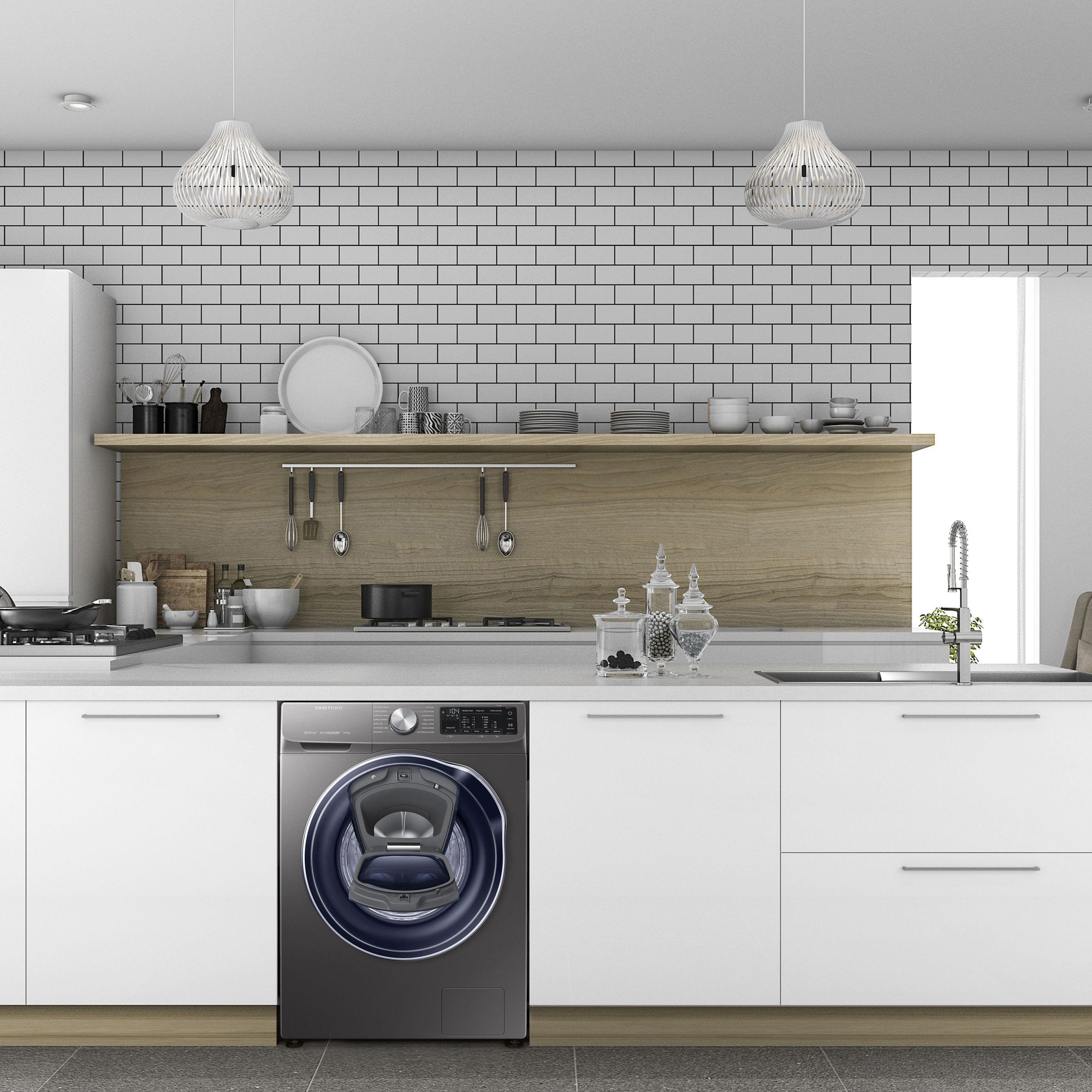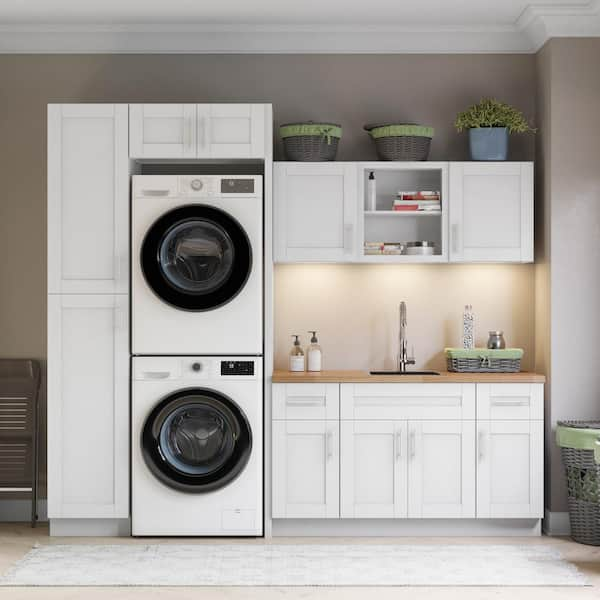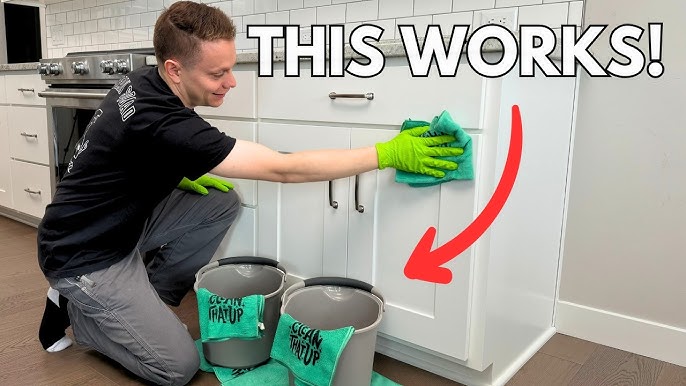Are your white kitchen cabinets starting to look less than pristine? You’re not alone.
Those bright, gleaming surfaces that once added charm to your kitchen can quickly become magnets for stains and grime. Finding the right cleaner can feel like a never-ending quest, leaving you frustrated with lackluster results. But what if the solution was simpler than you thought?
Imagine restoring that fresh, spotless look to your cabinets with ease. We’ll uncover the best cleaner for white kitchen cabinets, ensuring they remain the stunning centerpiece of your culinary space. Stick around; you won’t want to miss this transformative secret that could save you time and effort while bringing back that coveted sparkle.
Factors To Consider
Choosing the best cleaner for white kitchen cabinets requires considering several factors. These factors ensure your cabinets remain pristine and damage-free. Let’s explore key aspects to guide your choice.
Material Compatibility
White kitchen cabinets can be made from wood, laminate, or metal. Each material reacts differently to cleaning products. Ensure the cleaner suits the cabinet’s material. A wrong cleaner can cause discoloration or damage.
Effectiveness On Stains
Food splatters and grease can stain white cabinets easily. A cleaner should effectively remove these stains. Check reviews or labels for stain-fighting capabilities. The cleaner should maintain the cabinet’s original shine.
Ease Of Use
Some cleaners require mixing or diluting. Others are ready to use. Choose a cleaner that fits your cleaning routine. A spray bottle may offer convenience. Make cleaning quick and hassle-free.
Safety And Eco-friendliness
Consider cleaners that are non-toxic and safe for your family. Eco-friendly options reduce environmental impact. Look for labels indicating biodegradable ingredients. A safe cleaner ensures healthy living spaces.
Types Of Cleaners
Finding the best cleaner for white kitchen cabinets involves choosing gentle yet effective solutions. Mild dish soap mixed with warm water often works well. For stubborn stains, vinegar can be a natural option.
Cleaning white kitchen cabinets is crucial for maintaining their pristine appearance and ensuring longevity. With various types of cleaners available, choosing the right one can feel overwhelming. Whether you prefer store-bought solutions or homemade concoctions, understanding your options helps you make informed decisions for your kitchen upkeep.All-purpose Cleaners
All-purpose cleaners are versatile and readily available at most supermarkets. They offer a convenient solution for everyday cleaning tasks. These cleaners are generally safe for a variety of surfaces, including wood, laminate, and painted finishes. Many people, like my neighbor who swears by a popular brand, find these cleaners effective for quick wipe-downs. However, they may not be the best for deep cleaning or removing tough stains. Always check the label to ensure compatibility with your cabinet material.Specialty Cabinet Cleaners
Specialty cabinet cleaners are formulated specifically for kitchen cabinets. They often contain ingredients that target grease and grime without damaging delicate finishes. These cleaners are ideal for those stubborn spots that all-purpose cleaners may struggle with. For instance, when I had a spill of tomato sauce, a specialty cleaner was my saving grace. It tackled the stain without dulling the cabinet’s finish. If your cabinets endure heavy cooking traffic, investing in a specialty cleaner might be wise.Natural And Diy Options
Natural and DIY options are perfect for eco-conscious individuals or those sensitive to harsh chemicals. Ingredients like vinegar, baking soda, and lemon are common in homemade cleaning solutions. These options are cost-effective and can be customized to suit specific cleaning needs. You might wonder if these gentle solutions can handle tough grime. My friend once shared her success story of using a vinegar and water mix to clean her sticky cabinet handles. Experimenting with different combinations can lead to effective and safe cleaning alternatives. Which type of cleaner do you find most reliable for your kitchen cabinets? Selecting the right cleaner not only enhances the appearance of your cabinets but also extends their life. So, next time you notice a spill or smudge, consider which type of cleaner would work best for you.Top Picks For Cleaners
Keeping your white kitchen cabinets looking pristine can feel like a challenge, especially when spills and fingerprints are a daily occurrence. But don’t worry! Choosing the right cleaner can make all the difference. Whether you’re looking for a versatile solution, a natural approach, or something to tackle tough stains, we’ve got you covered with our top picks for cleaners. Dive in and find the perfect match for your kitchen!
Best All-purpose Cleaner
If you’re like me, you want a cleaner that can handle everything. All-purpose cleaners are great because they simplify your routine, making it easier to keep your kitchen spotless without juggling multiple products. Look for ones that are non-abrasive and leave no residue. Products like Simple Green All-Purpose Cleanerare a favorite among homeowners for their effectiveness and gentle formula. It’s perfect for quick wipe-downs and keeping cabinets gleaming. What’s your go-to for everyday cleaning?
Best Natural Option
Some prefer a cleaner that’s kinder to the environment and to their home. Natural cleaners are ideal if you’re sensitive to harsh chemicals or just want to make eco-friendly choices. Consider options like Mrs. Meyer’s Clean Day, which uses plant-derived ingredients to clean effectively without synthetic fragrances. It’s a breath of fresh air for both your kitchen and your conscience. Have you tried switching to natural cleaners?
Best For Tough Stains
Sometimes, regular cleaning isn’t enough to tackle those stubborn stains. Heavy-duty cleaners are essential when dealing with grease or grime that refuses to budge. Products like Bar Keepers Friendare specially formulated to tackle tough stains without damaging surfaces. This cleaner works wonders on removing those unsightly marks that seem impossible to erase. Have you faced stubborn stains that just wouldn’t go away?
Each kitchen is unique, and finding the right cleaner for your white cabinets can transform your cleaning experience. Whether you opt for versatility, natural ingredients, or power-packed formulas, choose what suits your needs and keeps your cabinets looking their best. Share your thoughts on what works for you!

Credit: www.homedepot.com
Cleaning Techniques
Discover the ideal cleaner for white kitchen cabinets to keep them shining bright. Mild dish soap mixed with warm water effectively removes dirt and stains. Regular cleaning prevents grease buildup and maintains their pristine look.
Keeping your white kitchen cabinets spotless can feel like a daunting task. However, with the right cleaning techniques, you can maintain their pristine appearance with ease. Let’s dive into some effective methods that not only preserve the beauty of your cabinets but also extend their lifespan.Routine Maintenance
Routine maintenance is essential to keep your cabinets looking fresh. Wipe down your cabinets with a soft microfiber cloth every few days. This simple act removes dust and prevents grime buildup. Use a gentle mixture of warm water and mild dish soap for your weekly cleaning. It’s effective and won’t damage the finish. Dry the surfaces immediately to avoid water spots. Avoid using abrasive cloths or harsh chemicals. They can scratch or discolor the cabinet surface over time.Deep Cleaning Methods
Deep cleaning requires more effort but ensures thorough cleanliness. Begin by removing everything from the cabinets. This gives you access to every nook and cranny. Use a mix of vinegar and water for a natural deep clean. Spray it onto the surfaces and let it sit for a few minutes before wiping away. This solution cuts through grease without harming the finish. For stubborn stains, consider a baking soda paste. Apply it gently with a soft cloth. Rinse and dry thoroughly to prevent residue.Tips For Avoiding Damage
Your cleaning routine should protect your cabinets as much as it cleans them. Always test new cleaners on a hidden spot first. This helps ensure they won’t cause discoloration. Keep cabinets dry by wiping away excess moisture promptly. Prolonged exposure can lead to water damage or warping. Consider using cabinet liners to protect the interior from spills. They are easy to replace and can save you from potential damage. Have you ever noticed a slight discoloration after using a certain cleaner? It’s a common issue and a good reminder to stick to products that are safe for your cabinet’s finish. By following these practical tips, your white kitchen cabinets will continue to shine bright, enhancing the overall look of your kitchen.Common Mistakes
Choosing the wrong cleaner can damage white kitchen cabinets, leaving stains and discoloration. Avoid harsh chemicals that strip the finish. Use a mild cleaner and a soft cloth for best results.
Cleaning white kitchen cabinets can seem straightforward. However, mistakes happen. These errors can lead to damage or less-than-spotless results. Understanding common pitfalls is key to maintaining the pristine look of your cabinets. Let’s dive into some frequent blunders you might be making.Over-scrubbing Issues
When faced with a stubborn stain, your first instinct might be to scrub harder. This can be a mistake. Over-scrubbing can lead to scratches and wear down the cabinet’s finish. Instead, try a gentle approach first. Use a soft cloth with mild cleaner. Sometimes, letting the cleaner sit for a minute can do wonders. Have you ever noticed how patience can sometimes solve what force cannot?Ignoring Product Instructions
Product instructions might seem like unnecessary reading. But ignoring them can be a costly error. Every cleaner is designed differently, and following instructions ensures optimal results. Take a moment to read the label. It might suggest a specific dilution ratio or application method. This small step can save time and prevent damage. Have you ever thought about how a simple oversight could lead to unintended consequences?Using Harsh Chemicals
Reaching for strong chemicals to tackle grime is tempting. Yet, this can strip the finish and discolor your cabinets. Harsh chemicals often do more harm than good. Opt for cleaners designed for kitchen surfaces. These are typically milder yet effective. Did you know that vinegar and water can be an excellent natural cleaner? They are gentle on cabinets and tough on dirt. Why take a risk when safer alternatives exist? Avoiding these common mistakes keeps your white kitchen cabinets gleaming and intact. Simple adjustments can make a big difference in the longevity and appearance of your cabinetry. What changes will you make today to protect your kitchen investment?
Credit: www.realhomes.com

Credit: www.homedepot.com
Frequently Asked Questions
What Cleaner Is Safe For White Cabinets?
Use a gentle, non-abrasive cleaner for white cabinets. Opt for solutions like vinegar and water or mild dish soap. These cleaners effectively remove dirt without damaging the cabinet’s finish. Avoid harsh chemicals to preserve the cabinet’s appearance and longevity.
How Often Should I Clean Kitchen Cabinets?
Clean your kitchen cabinets at least once a month. Regular cleaning prevents grime and bacteria buildup. For heavily used areas, consider cleaning every two weeks. Consistent maintenance keeps cabinets looking new and extends their lifespan.
Can Vinegar Remove Stains From Cabinets?
Yes, vinegar is effective for removing stains from cabinets. Mix equal parts vinegar and water for a cleaning solution. Apply with a soft cloth to the stained area. Vinegar’s acidic properties help break down stains without harming the cabinet’s finish.
Are Commercial Cleaners Safe For Kitchen Cabinets?
Many commercial cleaners are safe for kitchen cabinets if used correctly. Choose products labeled for kitchen surfaces. Always test a small area first to ensure no damage or discoloration. Follow manufacturer instructions for optimal results and cabinet safety.
Conclusion
Choosing the right cleaner is key for white kitchen cabinets. Regular maintenance keeps them looking fresh and bright. Avoid harsh chemicals. They can damage the cabinet finish. Opt for gentle solutions. Baking soda and vinegar are great choices. They clean without harm.
Test cleaners on a small area first. This ensures safety for your cabinets. Always follow manufacturer recommendations. This helps maintain the cabinet’s warranty. Clean cabinets enhance the kitchen’s appeal. They make the space inviting. A clean kitchen boosts mood. It feels welcoming and organized.
Keep your cabinets pristine. Enjoy a beautiful, clean kitchen every day.

As the chief content writer, Hassan Al Sarker works as a professional kitchen-based content creator at Kitchen Liker.
In addition to reviewing the content published on Kitchen Liker, he ensures that it is accurate, relevant, and helpful. As a result, all the reviews and information published at Kitchen Liker are neutral and userfriendly.
Hassan Al Sarker has a bachelor’s degree in Hotel and Tourism Management From the Newyork University. Before joining Kitchen Liker, he was a contributor at Kitchen Club, United States.

